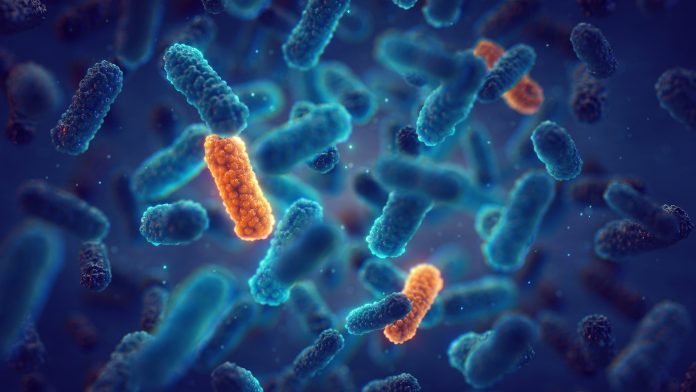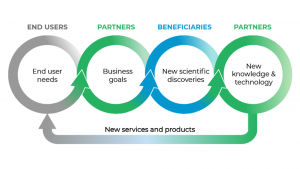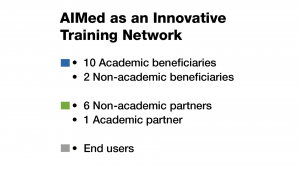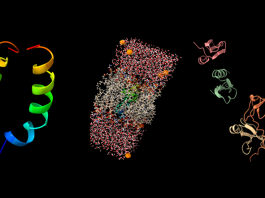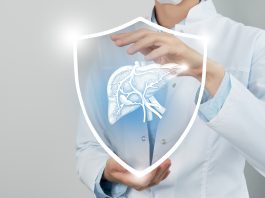AIMed provides a comprehensive research project centred around antimicrobial peptides and biomaterials for medical applications.
Antibiotic-resistant infections are a key issue in rising mortality and morbidity rates, especially in post-operative scenarios. The risk of infections is especially high for orthopaedic surgeries, leading to a heavy financial burden on the healthcare system. This mandates the need for large-scale funding and collaborative work in order to develop a series of medical devices with enhanced antimicrobial activity and biocompatibility.
The European Union’s funded Antimicrobial Integrated Methodologies (AIMed) is one such multi-disciplinary and inter-sectoral effort directed towards combating orthopaedic infections. AIMed is a Marie Sklodowska-Curie Innovative Training Network (Horizon2020 MSCA-ITN), consisting of 12 beneficiaries and seven partner organisations, for training 15 early-stage researchers (ESRs) across Europe.
AIMed’s training network
The AIMed network promotes interdisciplinary academic research for developing next-generation orthopaedic implants with antimicrobial properties. One of the key areas of focus is the development of novel antimicrobial peptides allowing large-scale production and fusion with biopolymers for improved delivery to infection sites.
Within the network, researchers are collaborating to investigate novel techniques for subsequent immobilisation and conjugation of antimicrobial peptides on potential material surfaces.
AIMed is co-ordinated by Professor Artemis Stamboulis at the University of Birmingham. Professor Stamboulis leads the Biomaterials Research Group at the School of Metallurgy and Materials, which works on the design and synthesis of novel antimicrobial peptides that mimic the antimicrobial core of human defensins.
AIMed’s current projects
Along with early-stage researchers Pietro Ricco, Diana Gomes and Mohadeseh Zare, Professor Stamboulis’ group works on computational and Machine-Learning algorithms for designing peptides using solid-phase peptide synthesis (SPPS). Their research also encompasses different techniques, such as plasma nitriding and laser treatment for the functionalisation of surfaces with antimicrobial peptides. The project is also heavily associated with the Surgical Reconstruction and Microbiology Centre (SRMRC).
Professor Antonella Bandiera at the Universita Degli Studi di Trieste, Italy, along with Laura Colomina Alfarao, are using recombinant DNA technology to produce human elastin-like polypeptides (HELPs) fused with computationally-designed peptides based on the sequence of the human β-defensins. The development of antibacterial human defensin-like peptides fused to collagen proteins is also carried out in collaboration with Dr Edwige Meurice, Professor Anne Leriche and one of the early-stage researchers, Cristina Cantallops Vilà, at the Université Polytechnique Hauts-de-France, France.
At the Université, Paul Sabatier Toulouse, Dr Sophie Cazalbou, and early-stage researcher Andrea Marfoglia are 3D printing antimicrobial hydrogels with dual crosslinking mechanisms. A specific area of interest also involves developing sterile antimicrobial materials for orthopaedic applications and optimising bioactive agent release from medical devices.
Using a chemical synthesis approach, David Groissin and ESR Edoardo Cianflone at the Institut National Polytechnique de Toulouse are working on developing fourth-generation biomaterials using substituted calcium phosphased-based multifunctional materials. In Croatia, Dr Maja Dutour Sikiric at Ruder Boskovic Insititute (RBI) and ESR Ana Marija are directing their efforts towards multi-layered antimicrobial coatings consisting of polyaminoacids and silver nanoparticles.
At the University of Porto, Professor Maria Helena Fernandes and ESR Sanjana Vig comprehensively study bone formation and resorption processes under 2D conditions and 3D-tissue-engineered biomaterials. They have further established a model of crosstalk between resident bone cells, osteoclasts and osteoblasts mediated through secretion of extracellular vesicles. Their research is focused on bone metabolism and regeneration to develop optimised antimicrobial implants further.
The consortium is also exploring cutting-edge techniques for surface modifications using laser-induced micro and nanopatterning on patterning and nanolayer formation. Dr Albena Daskalova’s group at the Institute of Electronics, Bulgarian Academy of Sciences, is working on ultra-short laser patterning to develop antimicrobial surfaces. Three ESRs in her group, including Dante Maria Aceti and Emil Filipov, study laser patterning on polymers, composites, titanium, titanium alloys and bioceramics such as tricalcium phosphate and hydroxyapatite surfaces. They have recently reported a single-step process for simultaneous ultrashort-laser structuring and silver nanoparticle synthesis.
In yet another novel approach, Professor Silke Christiansen at the Friedrich-Alexander Universität Erlangen-Nürnberg, Innovations-Institut für Nanotechnologie und korrelative Mikroskopie, Germany, is working on laser-induced periodic surface structures (LIPSS) for developing smart biomaterials. Under her supervision, Lamborghini Sotelo exploits laser texturing to investigate the effects of surface roughness and wettability for the development of optimised surfaces with both antimicrobial activity and osteoinductive potential. Doctors Wolfgang Schuesselbauer and Hans Amler at Photon Energy GmbH further employ ultra-short laser impulses to modulate nano- and micro-topography, and chemical and structural composition. Petr Druzhinin is optimising these structures for enhanced antimicrobial activities.
The AIMED project underscores the significance of antimicrobial coatings due to the escalating issue of antimicrobial resistance. It highlights the diverse approaches employed to develop antimicrobial materials and peptides for various biomedical applications, ranging from orthopaedics to broader biomaterials functionalisation. The importance of these advancements in the context of mitigating antimicrobial resistance is emphasised. Research findings highlight the potential of cyclodipeptides to self-assemble into supramolecular polymers, forming antimicrobial gel coatings. Various strategies for producing and purifying antimicrobial peptides are also being investigated.
References
- Advanced Materials Technologies 2023, 10.1002/admt.202201802
- Polymers 2022, 14(21), 4554.
- Nanomaterials 2023, 36770480
- Materials 2022, 15(13), 4670
- Polymers 2022, 14(12), 2382
- Biomedicines 2022, 10(4), 767
- Biotechnology and Bioengineering 2023, 36349439
- Innovative Bioceramics in Translational Medicine I. Springer Series in Biomaterials Science and Engineering, vol 17
- Arh Hig Rada Toksikol 2022;73:A12-A21
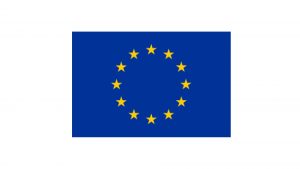 This project has received funding from the European Union’s Horizon 2020 research and innovation programme under the Marie Skłodowska-Curie grant agreement No 861138
This project has received funding from the European Union’s Horizon 2020 research and innovation programme under the Marie Skłodowska-Curie grant agreement No 861138
Please note, this article will also appear in the sixteenth edition of our quarterly publication.

